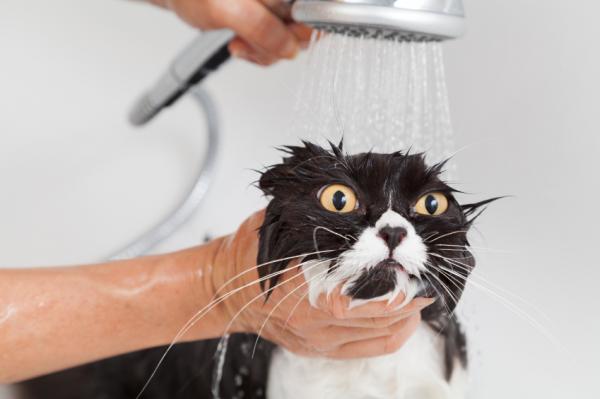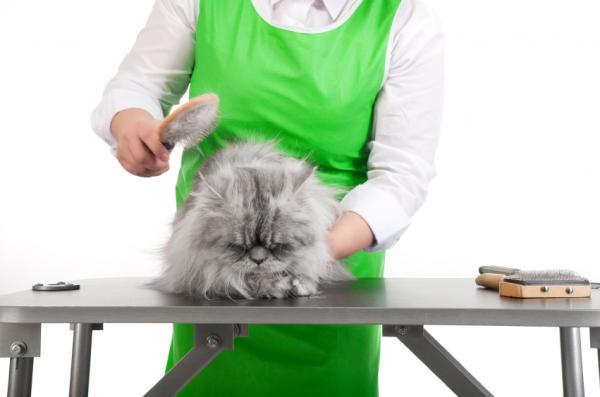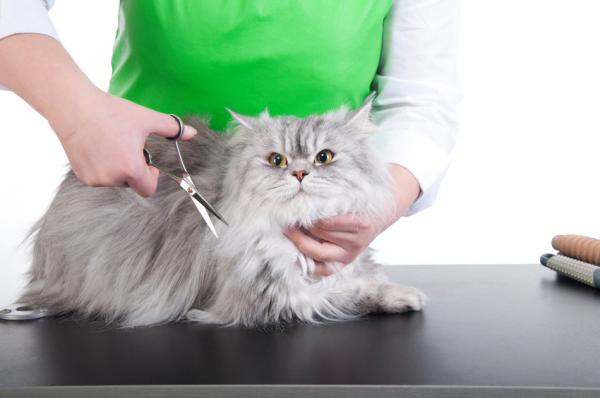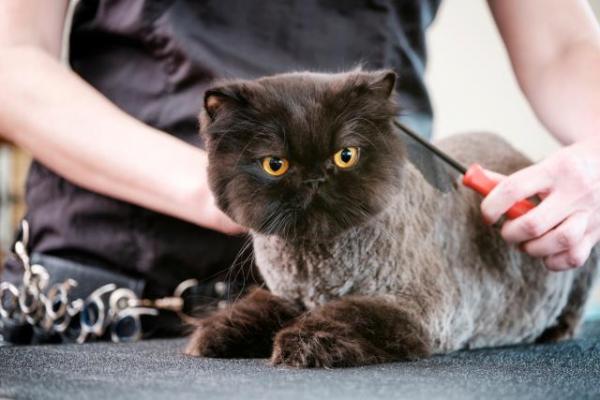How to cut a cat’s hair at home

Either because of the heat or because it is so long and tangled it is time to cut! Cutting your cat’s hair can be a relaxation therapy, or on the contrary, it can be a drama. A cat with healthy and careful hair, is a happy cat.
This is a key moment in which your pet puts all their trust in you to fix your most precious treasure: your fur. For this reason and to create a better bond with the animal, it is important to learn to master the art.
If you want to know How to cut a cat’s hair at home? Continue reading this article where we will give you the step by step and the best techniques so that you and your feline companion have the best experience.
If your cat is still a puppy you have a golden opportunity in your hands to start to get used to it in this sense, and that with time, all the routine of the cut and maintenance of the hair, it becomes a pleasant and special moment. The best time to do this is at the beginning of the summer season, so you’ll help keep it cool when the temperatures rise.
If, on the other hand, your cat is already an adult and this is your premiere as a hairdresser, you should have a lot of patience, be careful and delicate in the whole process. Remember that there will be scissors and / or trimmers in the environment, so safety will be very important, in addition, you will not want to shear your pet.

The first thing will be to prepare the battlefield. Choose a large place to perform the hairdressing session. A place where you can have space to place all the things without being piled up, that will help you to be more organized and move with ease throughout the process. Remember to take as much time as necessary. In we recommend you to locate in the kitchen, they are usually larger than bathrooms. Make scissors (various sizes), baby oil, trimmers, cloths, brushes, hair clips, combs and any other element you think necessary.
Before cutting your hair you should give him a relaxing bath to prepare it for the moment of the scissors. Also, it will be a great idea if you take advantage of reducing its claws, if you do not want to end up scratching. If your cat is constantly apprehensive, nervous and even aggressive, consult the veterinarian to administer some soothing before the session.
Place your cat on a towel or cloth, the less hair disaster you have, the subsequent cleaning will be more bearable.

Start using your usual comb for untangle the hair, identify the length of it and eliminate the knots that can be removed without the use of scissors. Combine the whole body of the cat until you find the most hidden entanglements. All this will help you plan your cutting strategy. Very important!

Once you finish brushing, cut long pieces of hair, cut in all places where you have surface knots, especially, those complicated places where the trimmer or electric razor can not access or is somewhat dangerous.
Depending on the area, use scissors of different sizes. Complicated areas: ears, nipples and vulva (in case of females) and around the anus. For the knots remember to denseredar them as much as you can and then always cut with scissors, avoid the trimmer. Cut as long as you can.

Now it’s the turn of the trimmer, a tool that you’ll use if you want to be more radical about the length of the hair. It is very important that the fur of the cat is not excessively long, but the use of the electric razor it can be very dangerous. Before using it, you must cut appropriately with the scissors.
The trimmers are for the body of the cat that have a route from the neck to the base of the tail, making straight and linear movements. Do not press too hard against the feline’s skin because it can be uncomfortable and even dangerous, the trimmer will do its job. Again, take your time because the cat may not be a fan of the noise that the trimmer makes.
Try to be organized in terms of the areas that you are going down and go in parts. Make a couple of wider passes and then review in more closed areas, such as the tail.
Try keep the same length all over the body, except in the head, this is a very delicate place where the trimmer is not used, never try to shave and shave the face of your cat. For the area of the head and face, return with the safest scissors you have. In fact, many hairdressers do not abuse cutting these areas, but keep them a bit longer than the rest of the body.

Stop and stay constantly so you have a vision of how the cut is going, in this way, you will avoid having to give an extreme shave to your poor cat. Channel your inner hairdresser and try to do the best job, you will see that when you finish, you will feel proud and your cat very comfortable.
Review areas that have been uneven, and finally, brush your cat several times to remove any remaining fluff or hair that is attached to your skin.

If you want to read more articles similar to How to cut a cat’s hair at home, we recommend that you enter in our Beauty Tips section.


